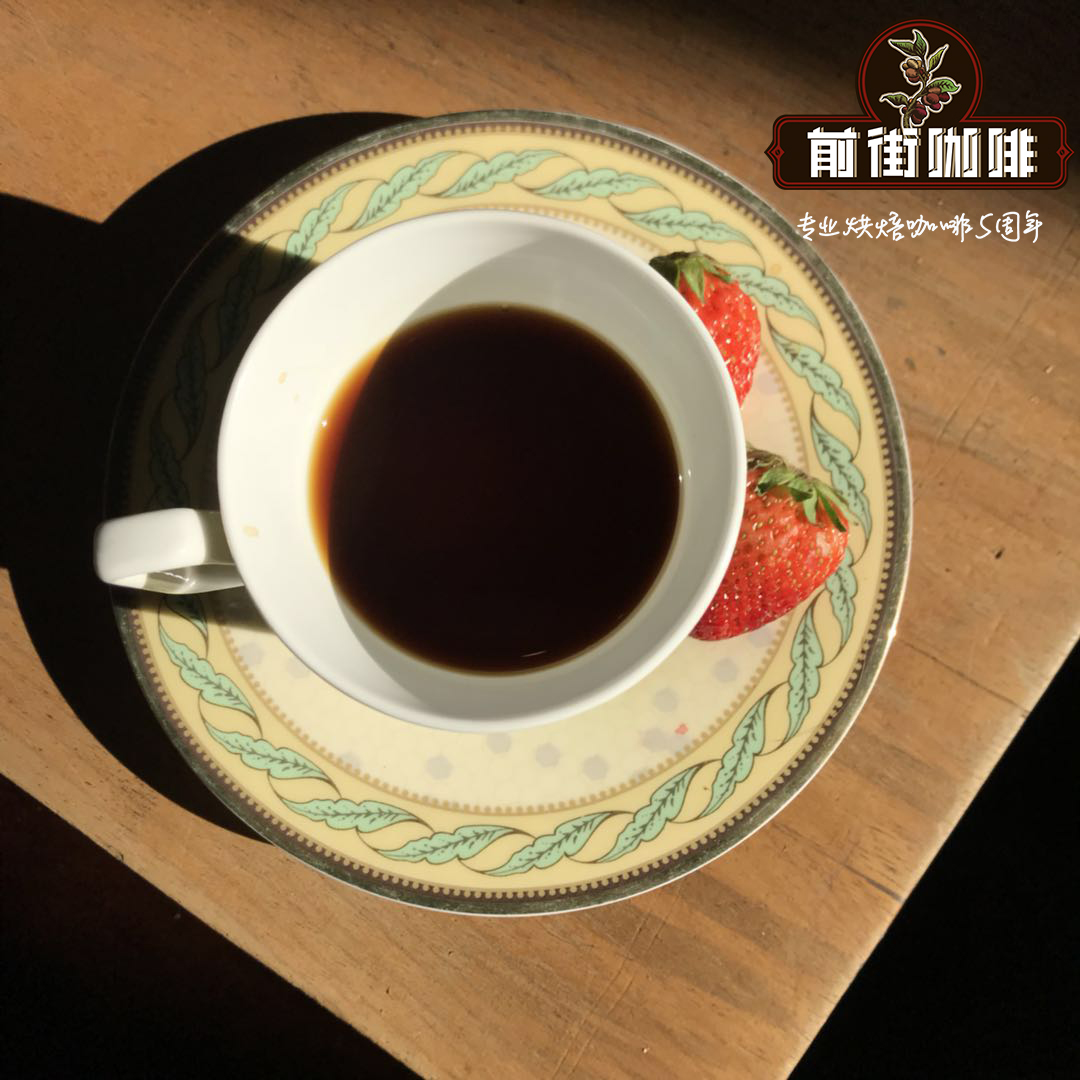Salvadoran Coffee introduces Salvadoran flavor Savivado

Professional coffee knowledge exchange more coffee bean information please follow the coffee workshop (Wechat official account cafe_style)
Salvadoran coffee
Unique, mild-tasting coffee. El Salvador is one of the small countries in Central America with a dense population. The flavor of its coffee is characterized by excellent balance. Today, this coffee accounts for 40% of the country's exports. 35% of the extra hard beans of the best coffee are exported to Germany from January to March.
In the early 1990s, guerrilla warfare greatly damaged the country's national economy, reducing coffee production from 3.5 million bags in the early 1970s to 2.5 million bags in 1990-1991. The eastern part of the country was the hardest hit by guerrilla warfare, with many farmers and workers forced to leave the manor. The shortage of funds has led to a sharp drop in coffee production, from 1200 kg per hectare in the past to less than 900kg per hectare today.
In addition, the government imposed an additional 15% tariff on exported coffee in 1986, that is, an additional 15% in addition to the existing 30% tax. Taxes, together with unfavorable exchange rates, greatly reduce the export of coffee and the quality of coffee. The government finally realized the great role of coffee in the national economy, such as solving employment, earning foreign exchange and developing agriculture, so it privatized some coffee export industries in 1990, hoping to increase the income rate of coffee in the export market.
In Cuscacbapa, El Salvador, packaged coffee beans are about to be exported to El Salvador. Coffee from El Salvador is a specialty of Central America, which is light, fragrant, pure and slightly sour. Like Guatemala and Costa Rica, coffee in El Salvador is graded according to altitude, and the higher the altitude, the better the coffee. The best brand is Pipil, which is what the Azbec-Mayan (AztecMayan) called coffee, which has been approved by the American Organic Certification Society (Organic Certified Institute of America).
Another rare coffee is Pacamara, a hybrid of Pacas and Maragogype. The best place to produce the coffee is in western El Salvador, adjacent to Santa Ana, which is close to the border with Guatemala. Parkmara coffee is full-grained, when the flavor is not too strong.
The Republic of El Salvador is located in Central America, bordered by Guatemala and Honduras to the north, and the Pacific coastline to the west and south. It is the smallest country in Central America and the most densely populated country in Central America. El Salvador's economy is dominated by agriculture, and the main products of agriculture are coffee and cotton. The country is divided into 14 provinces, of which 7 produce coffee.
El Salvador, known as the "country of volcanoes", is the smallest country in Central America, but its boutique coffee-growing area has been famous, especially since the beginning of the 21st century. Although coffee was mainly used for domestic consumption since the mid-17th century, it was not until the next hundred years that it became a very important and stable crop in El Salvador, and its importance in the country increased significantly in the late 19th century.
The political crisis of Salvadoran coffee
With the growing economic importance of coffee, the government, which aims to increase production through land, tax and military tax exemption incentives, plans to create a small and strong network of landowners with control over the coffee market. enable individual small coffee farmers who are growing to sell coffee cherries to larger estates or factories as part of their survival agriculture.
By the late 1970s, coffee exports accounted for 50% of GDP. But after that, the country fell into more than a decade of socio-economic and political turmoil, and the country was plunged into civil war.
In the 1980s, various land redistribution projects and land reform were out of touch with the coffee industry, and the market fell sharply. Due to the lack of resources to continue to grow, producers abandoned their coffee farms, and many people did not harvest for years after planting, resulting in a sharp decline in production, and in the early 1990s, guerrilla warfare greatly damaged the country's national economy, reducing coffee production from 3.5 million bags in the early 1970s to 2.5 million bags in 1990-1991. The eastern part of the country was most affected by guerrilla warfare, and many farmers and workers were forced to leave the manor. The shortage of funds has led to a sharp drop in coffee production, from 1200 kg per hectare in the past to less than 900kg per hectare today.
It was not until the 1990s that the government finally realized the great role of coffee in the national economy, such as solving employment, earning foreign exchange and developing agricultural production, and so on, so it privatized some coffee export industries in 1990, hoping to increase the income rate of coffee in the export market. In 1992, the parties signed a peace agreement, which ended the civil war. The coffee industry began to recover.
The natural crisis of Salvadoran coffee
In the 1980s (when many other coffee-producing countries were replacing low-yield heirloom coffee with more high-yielding and disease-resistant coffee), El Salvador was famous for some unique varieties and specific local hybrids: Bourbon, the local bourbon mutant Pacas, and the mixed Pacamara created by El Salvador (Pacamara mentioned in Nicaragua, mixed Pacas and Maragogype It is a large variety of coffee beans), which allows growers to market individual varieties of coffee by highlighting the genetics of the fruit itself, just like a single variety of wine.
The difference of bean type between Pacamara and Yejasuffi
Unfortunately, over the past 20 years, El Salvador has suffered a strong shock as a coffee producer, making it very vulnerable: well-known varieties that are often cultivated in a single culture are particularly vulnerable to coffee leaf rust. In particular, bourbon is not enough to fight the disease, while Pacas (Pacas) and Pacamara (Pacamara) both come from mutants or hybrids of bourbon varieties (Bourbon genetics). Crops in this country were affected by the latest outbreak of coffee leaf rust in 2010, resulting in a decline in quality and yield.
Coffee leaf rust
El Salvador continued to rebound under the devastating influence of coffee leaf rust, and farmers began to work to preserve as many family heirlooms as possible, with mixed results. As production has fallen by 50%, producers in El Salvador are facing tough decisions about what plants to plant on the rich volcanic soil.
Coffee is a more demanding crop than indigo, a plant dye and now popular blue dye, which used to be the dominant export commodity. Since coffee trees take several years to produce a usable harvest, their production requires more capital, labor and land investment than indigo. Coffee also grows best at a certain height, while indigo is popular everywhere.
Fairtrade coffee growers
Unlike Guatemala and Costa Rica the coffee industry in El Salvador has to a large extent not benefited from external technical and financial assistance. Nevertheless, El Salvador is one of the most efficient coffee producers in the world. This is particularly true on large coffee farms, where the yield per hectare is proportional to the size of the farm, which is rare in farming. In El Salvador, the social impact of coffee production is also immeasurable, not only in land ownership, but also because the infrastructure (roads and railways) and indigenous community mechanisms developed by the coffee industry as a catalyst are integrated into the national economy.
END
Important Notice :
前街咖啡 FrontStreet Coffee has moved to new addredd:
FrontStreet Coffee Address: 315,Donghua East Road,GuangZhou
Tel:020 38364473
- Prev

The origin and flavor characteristics of bourbon varieties the difference between red bourbon and yellow bourbon
Bourbon coffee (French: Caf Bourbon) is a kind of coffee produced by growing coffee trees in bourbon cultivation of Arabica coffee. Bourbon coffee was originally grown in Reunion, which was also known as le Bourbon Island before 1789. It was later occupied by France to connect with the African continent and Latin America, and it is now the two most popular Arabica coffee producers in the world.
- Next

Is it possible to buy coffee powder or coffee beans pre-milled coffee powder is better than Xinzhan grinding?
Professional coffee knowledge exchange more coffee bean information Please follow the coffee workshop (Wechat official account cafe_style) I believe that all coffee lovers are no stranger, because once you start making your own coffee, the first question you face when buying coffee is: is it better to buy coffee beans or coffee powder? This issue is very important and basic, and many people have been bothered by it for a long time. The following
Related
- Beginners will see the "Coffee pull flower" guide!
- What is the difference between ice blog purified milk and ordinary milk coffee?
- Why is the Philippines the largest producer of crops in Liberia?
- For coffee extraction, should the fine powder be retained?
- How does extracted espresso fill pressed powder? How much strength does it take to press the powder?
- How to make jasmine cold extract coffee? Is the jasmine + latte good?
- Will this little toy really make the coffee taste better? How does Lily Drip affect coffee extraction?
- Will the action of slapping the filter cup also affect coffee extraction?
- What's the difference between powder-to-water ratio and powder-to-liquid ratio?
- What is the Ethiopian local species? What does it have to do with Heirloom native species?

